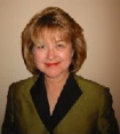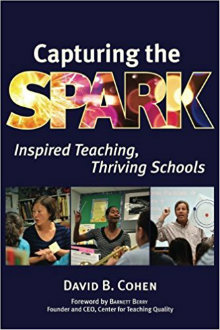A Year in Search of Thriving Public Schools
Capturing the Spark: Inspired Teaching, Thriving Schools
By David B. Cohen
(Enactive Publishing, 2016 – Learn more)

Tired of teacher bashing and criticism of public schools, David Cohen – a high school teacher for over 20 years and a National Board Certified one – took the 2014-15 school year to visit 70 schools up and down California where teachers are leading improvement efforts.
Cohen visited elementary, middle, and high schools of various sizes, rich and poor, in rural, urban, and suburban communities. His conclusion? “Students benefit when teachers have the ‘autonomy and opportunity to lead.’”

The effects of school selection
Cohen does go into some “poor” schools, but the majority seem to be in middle-to-high income areas, and the visits are short. He goes to his own elementary school and comments on the difference in the ethnic makeup now, but I think the majority of schools up and down the state are now ethnically mixed.
He’s impressed with the pre-school and elementary student enthusiasm and comments on strategies, student comments, and teacher enthusiasm, but most of all how the teachers he saw seem to love their schools and students.
As someone who has visited many schools in California – as a teacher, WASC (Western Association of Schools and Colleges) evaluator, teacher-trainer, assistant principal, and principal – I think that if one set his or her mind to it, one could find as many ineffective, even shocking schools and practices, and teachers who don’t care. Kids, especially secondary ones, tell parents about teachers like these, and that’s what sends them looking for charter and private schools if they can afford them.
A need for prescription as well as description
So I suppose I wish Cohen would make his message stronger. Something like: there are many good schools out there and this is why they are good, and they are what you as a reader or parent should look for in a public school classroom.
I understand that teaching can be a lonely experience, and most teachers don’t know how well the teacher next door to them is really teaching, but I found myself wanting him to get to a deeper analysis of schools and their cultures. His visits are short, the teachers are expecting him, and they already have a good recommendation from him or are referred to him by colleagues.
My conclusion from his observations would have been different. Teachers do have a lot of autonomy and opportunities to lead. They can make a difference. But if they don’t love the culture of their school and their students and think of them as a family, no one benefits. He hints at this conclusion, but I’d like to see him emphasize it more. I’d also like to know if these teachers started out loving their jobs and kids, or whether they came to be more skilled and accepting as time went on and they came to love their work.
I’m pleased he saw so many good schools. Now how do we improve the ones that need improving?
Best practices or best conditions?
Cohen concludes, “Instead of focusing on best practices, I prefer to ask that we focus on best conditions.” But we’re probably never going to have ideal conditions, so what are the best practices for classroom management or teaching reading or English as a Second Language? The teachers observed in this book are using best practices and coming up with new ones, so I say let’s do focus on best practices.
The Appendices are useful and the reader can read more about school improvement. And, although Cohen criticizes Michelle Rhee and Teach for America, I think he should include Rhee’s book in his recommendations so that readers can make up their own minds.
The best audience for this fascinating, thought-provoking book are teachers in training so that they can seek out outstanding teachers on their own as models and learn from them. Another audience would be those on the fence about the pros and cons of charter schools and public schools.
I enjoyed following in the footsteps of the author looking to capture bright sparks in schools. He found many, and it’s a start for showing people what’s good about public schools. It’s the balance that’s missing.
Dr. Mary Langer Thompson’s articles, short stories, and poetry appear in various journals and anthologies. After many years of teaching middle and high school English, she worked with hundreds of beginning and experienced California teachers as a “Clinical Consultant” at UCLA and as a public school administrator.


































Thank you for this thoughtful and detailed review, Mary. I think it will help potential readers decide if CTS is something they want to read. My intent was for the book was to provide the positive counterbalance to an overly negative public vision of public education, so balance within the book wasn’t my goal, and readers seeking that kind of balance may be disappointed. One factual point of clarification: there was more socio-economic balance than you inferred, though I didn’t consistently focus on details regarding socio-economics so that might have been unclear. Also, in several cases, schools in affluent neighborhoods are drawing students from non-affluent areas, and serving a disproportionate number of students from working class/poor families in those areas.
David, thank you for your comments and clarifications. I am recommending your book to teacher educators and others interested in education I know, and I applaud you for taking the time off to look at good schools without pay or to get an extra degree, but simply to find “sparks,” and you did succeed in your goal. More teachers should do what you did. Thank you for writing your book. You made me think–a lot!